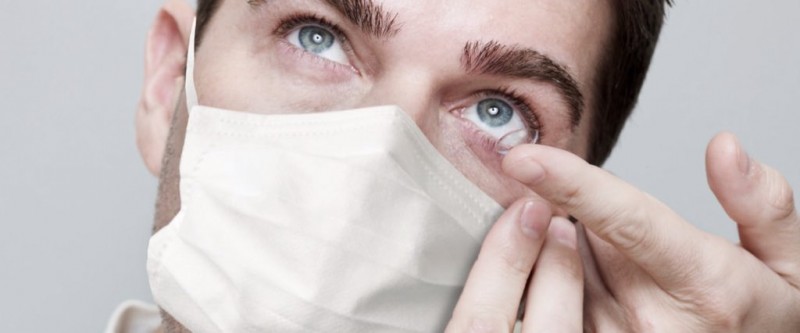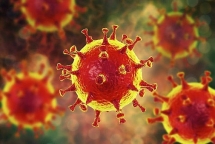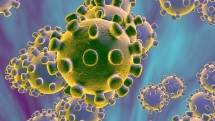Helpful information regarding COVID-19 and contact lens
| How coronavirus damages the lungs? (Video) | |
| Germany media praised Vietnam winning its ‘war’ on coronavirus | |
| Many a little makes Vietnam miracle - contribution of free meals to fights against COVID-19 |
 |
| Avoid contact lenses during COVID-19 outbreak |
That's because wearing glasses can help you stop touching your face, according to the American Academy of Ophthalmology, a key way any virus is spread, including the novel coronavirus currently spreading across the world.
Contact lens users not only touch their eyes to put in and remove their lens twice or more a day, they also touch their eyes and face much more than people who don't wear contacts, said Dr. Thomas Steinemann, a clinical spokesperson for the American Academy of Ophthalmology.
"You touch your eye and then you touch another part of your body," said Steinemann, an ophthalmologist at MetroHealth Medical Center in Cleveland, Ohio.
"You rub your eyes, then rub your face, scratch your face, put your fingers in your mouth, put your fingers in your nose," he added. "Some people are not very hygienic and may have forgotten to first wash their hands."
Glasses may also provide a tiny bit more protection from any coronavirus virus particles floating in the air, Steinemann said, although it's more likely that you'd be infected via your mouth and nose than your eye.
In case you're wondering, it's not likely you can get the novel coronavirus - or any virus -- from the eye itself.
"Can you end up with with Covid-19 from the virus entering through the eye? Theoretically, it's possible, but we have no proof of that," he added.
"It's possible, I guess, but I've always thought that that was a bit of a stretch," said infectious disease expert Dr. William Schaffner, a professor of preventative medicine and infectious disease at Vanderbilt University School of Medicine in Nashville.
Dr. Mehrdad E. Saadat of the Tulman Eye Group, leader of the Georgia Optometric Association, says priority number one starts with keeping your hands clean with soap and water.
"Between the nails would be very critical," explains the 15-year veteran of optometry.
So to avoid touching your face while wearing eyeglasses, the doctor says to make sure they're properly adjusted to keep them from sliding down your nose.
Still, he says if you have to use contact lenses, make sure you clean them correctly.
"Either before you put them in or take them off, scrubbing the contact lenses in the palm of your hand for five seconds with some contact lens solution," he says.
Also, limit rubbing your eyes. If you feel like you need to, use a tissue, not your fingers. Use moisturizing drops if you tend to have dry eyes. But before you use the drops, make sure you wash your hands with soap and water for at least 20 seconds. Then, eye experts say, wash them again after using the medication.
Pink eye connection
What's more likely is that this new coronavirus could cause conjunctivitis, a highly contagious condition also known as pink eye. Conjunctivitis is an inflammation of the thin, transparent layer of tissue, called conjunctiva, that covers the white part of the eye and the inside of the eyelid.
"Conjunctiva is modified mucus membrane, like the inside of your mouth or the inside of your nose or nasal cavity and pharynx," Steinemann said.
"It's moist and nice and hospitable for viruses, in fact there's lots of organisms that can stick very readily to your conjunctiva, or for that matter, stick on a contact lens that is also resting on your conjunctiva," he added.
Symptoms of conjunctivitis include tearing, itching or burning, blurred vision, red or "pink" in the whites of the eye, pus, mucus and a yellow discharge that can crusts over the eyelashes, often sticking the eyes together after sleep.
Reports from China and around the world are showing that about 1% to 3% of people with COVID-19, also had conjunctivitis.
This is concerning because the coronavirus can spread by touching fluid from an infected person's eyes, or from objects that person has touched which then carry the fluid.
The news caused more than a dozen national eye organizations to tell ophthalmologists to stop seeing patients for anything but urgent or emergency care, such as eye injuries. That includes both office and surgical care.
A newly released study by the American Academy of Ophthalmology found no evidence that people with COVID-19 were shedding the virus from their tears, but no one in the study had conjunctivitis. So it's still unknown if the novel coronavirus can be spread by tears.
Don't Panic, Be Cautious
That doesn't mean that any red or pinkish eye will be a sign of COVID-19, experts stress.
The novel coronavirus, also called SARS-CoV-2, is just one of many viruses that can cause conjunctivitis; in fact, it's so common that it came as no real surprise to scientists that this newly discovered Covid-19 virus would do the same.
"There's lots of organisms that can stick very readily to your conjunctiva, or for that matter, stick on a contact lens that is also resting on your conjunctiva," Steinemann said.
There are numerous viruses and bacteria responsible for the common cold that can cause pink eye, as can fungi, amoebas and parasites picked up from swimming in contaminated waters. Allergic reactions to smoke or dust, shampoos, pool chlorine, even eye drops can be to blame.
Plus there are many other, often benign causes of pink eye: seasonal allergies; a sty, which is a clogged eye duct or a sort of "eye pimple;" a chalazion, which is an inflammation of the gland along the eyelid; blepharitis, another inflammation or infection of the skin along the eyelid; or iritis, an inflammation of the colored part of your eye called the iris.
None of those conditions are contagious.
Still, a pink or red eye could be one more sign that you should call your doctor if you also have other tell-tale symptoms of COVID-19, such as fever, cough or shortness of breath.
Or it could just be allergies, especially if you've been sneezing and your eyes and nose are itchy.
Regardless, this is a time to be conscientious about social distancing at 6 feet and practicing good self-hygiene -- washing hands (the right way) at every opportunity and not touching your face. Which leads us back to putting up your contact lens for a while./.
 | Overseas Vietnamese in UK presents over 43,000 USD to aid COVID-19 fight Pham Minh Nam, an overseas Vietnamese national in the UK on March 26 presented 1 billion VND (over 43,000 USD) to support Vietnam’s fight against ... |
 | UK PM Boris Johnson, health minister Matt Hancock test positive for COVID-19 British Prime Minister Boris Johnson said on Friday (Mar 27) he had tested positive for coronavirus and was self-isolating at Downing Street. |
 | 97-year-old woman is the oldest to recover from coronavirus in South Korea A 97-year-old became the oldest woman in South Korea to recover from the coronavirus, according to a new report. |
In topics
Recommended
 Handbook
Handbook
Vietnam Moves Up 8 Places In World Happiness Index
 Handbook
Handbook
Travelling Vietnam Through French Artist's Children Book
 Multimedia
Multimedia
Vietnamese Turmeric Fish among Best Asian Dishes: TasteAtlas
 Handbook
Handbook
From Lost to Found: German Tourist Thanks Vietnamese Police for Returning His Bag
Popular article
 Handbook
Handbook
Prediction and Resolution for the Disasters of Humanity
 Handbook
Handbook
16 French Films To Be Shown For Free During Tet Holiday In Vietnam
 Handbook
Handbook
Unique Cultural and Religious Activities to Welcome Year of the Snake
 Handbook
Handbook














